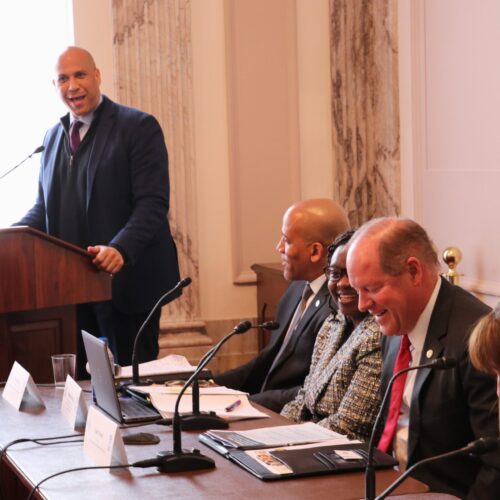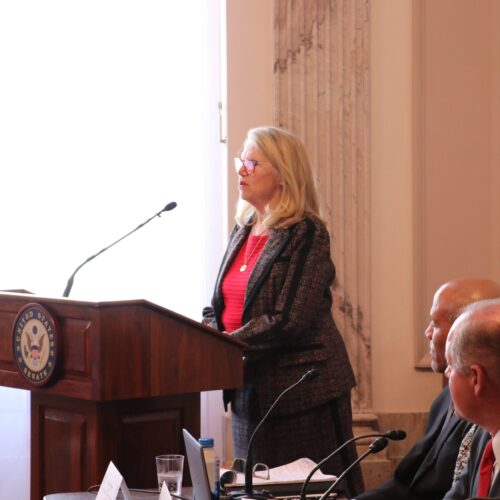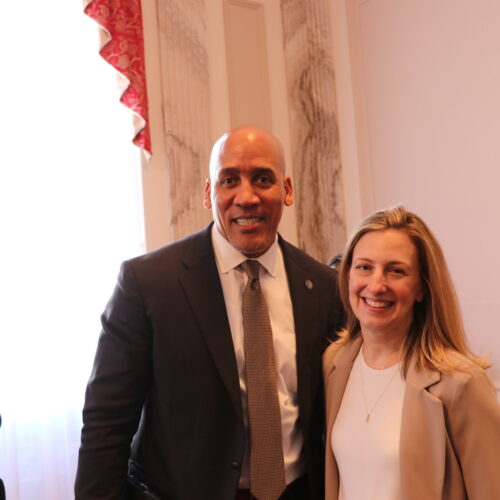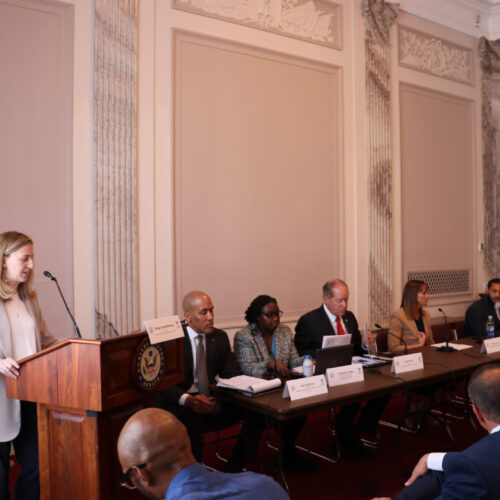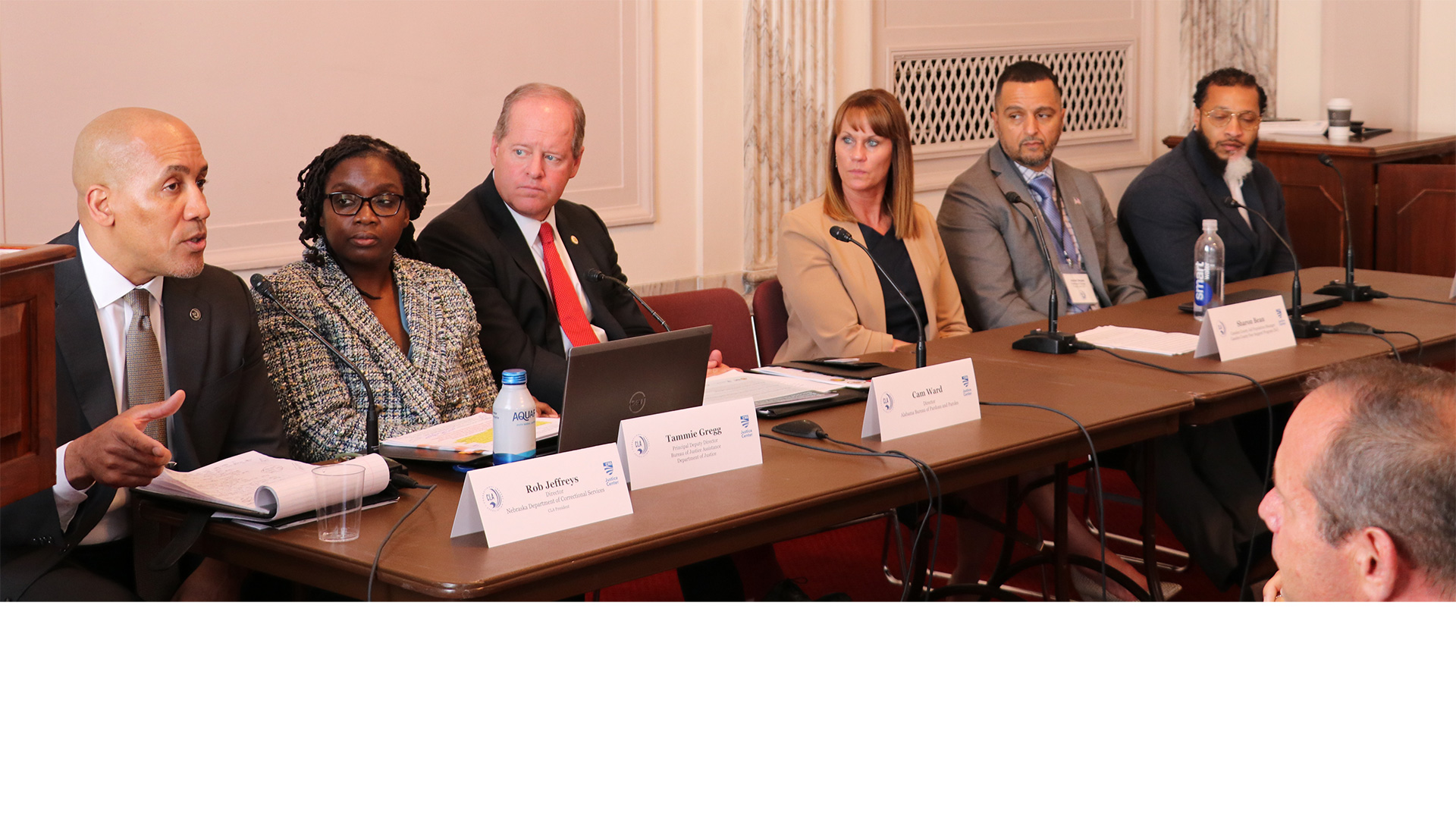
This week, alongside the Correctional Leaders Association and a distinguished list of keynote speakers and experts in the field, the CSG Justice Center co-hosted “The Second Chance Act at 15,” a congressional briefing that focused on the tremendous impacts of the Second Chance Act since it was passed in 2008.
Speakers emphasized the ongoing need for support of reentry services and discussed evidence-based strategies that reduce recidivism and foster brighter futures, stronger families, and safer communities.
With voices from various sectors, the event provided practical perspectives on the ground-breaking work in reentry services and underscored the importance of collaboration and innovation in providing people with second chances.
Live video starts at 32:23
Here are some highlights from the event:
“We need to be able to put the right person in the right program at the right time… It’s going to take all of us across this nation. Because it’s not just a correctional thing; it’s a national thing. And I think we’re at the right space in the right time to make impactful change across this country.” – Rob Jeffreys, Director, Nebraska Department of Correctional Services and President, Correctional Leaders Association
“I don’t think there’s a family on earth that doesn’t have someone that is struggling with some type of addiction. Anything we can do to help our fellow mankind come back and become productive citizens is so very important to me… I’ve seen the benefits of the Second Chance Act in West Virginia, because we’ve received 9 grants of over $5 million…and it has changed so many lives.” – Rep. Carol Miller (West Virginia)
“You are seeing in front of you, a person who spent almost 23 years in prison, in a system that I went into at the age of 17. I’m not going to make an excuse, even though the circumstances I was being raised in were not the best for a young person. But I think about the work I’m doing today, and that’s the legacy I want to leave…When you have the right support systems, the right programs, the right policies in place, you’re creating an opportunity for people who did not have those opportunities before.” – Javier Reyes, Founder and CEO, Challenge II Change (Illinois)
“Sometimes when I see people and I listen to testimonies, I have to pinch myself and say, ‘Is this real? Is this the work we’ve been able to get done?’… We took the Second Chance banner, and we’ve flown it all across the country. To remind everyone what life can be, even for those whose life took a different track.” – Rep. Danny K. Davis (Illinois)
“With our Second Chance grants that we’ve received, we started day reporting centers… We started with 1 in 2009, today we have 12… If you go through and successfully graduate from one of those programs, the recidivism rate is four percent… We’re doing this to save people’s lives and make sure our communities are safe…It’s not soft on crime; it’s safe on crime. We’re doing this to save people’s lives and make sure our communities are safe.” – Cam Ward, Director, Alabama Bureau of Pardons and Paroles and Advisory Board Chair, CSG Justice Center
“Second Chance looks like us. It’s a journey. Education is key. I started my journey in 2010. If it wasn’t for Second Chance [programs], I don’t know where I would be… Second Chance isn’t just for that one individual. It’s a reverberation. And that reverberation looks like myself getting out of prison and working for the Center for Family Services and supporting individuals who need that same help.” – Prince Alvarado, Peer Support Specialist, Center for Family Services (New Jersey)
“It behooves all of us to do what we can to create effective connections and warm handoffs to our community partners and providers to increase the likelihood that those released from jail live safe, productive, and meaningful lives… The most important voice to hear, and it was often silent because we hadn’t been inclusive–we didn’t make room at the table for our most important stakeholder–[is] the men and women directly impacted by incarceration.” – Sharon Bean, Camden County Jail Population Manager, Department of Corrections and Project Administrator, Peer Support Reentry Program in Camden County (New Jersey)
“I don’t care what your angle is, this is an act that you should be fully behind…every outcome that we are looking for as a community, [the Second Chance Act] is what it’s all about. Most importantly, it’s about our shared collective American values. The thing I love, that can’t be measured, and I see this in my community in Camden, these folks that are helped go on to become leaders in their communities. There’s something that I see in people who are returning…it is an irrational and unwavering commitment to continued service.” – Sen. Cory Booker (New Jersey)
The Congressional briefing was also a forum to launch a new nationwide recidivism report, which found a 23 percent decrease in state-level reincarceration rates since 2008. 50 States, 1 Goal: Examining State-Level Recidivism Trends in the Second Chance Act Era highlights innovative and evidence-based strategies supported by the Second Chance Act and provides new analysis on the on the country’s reentry landscape 15 years after its passage.
About the author
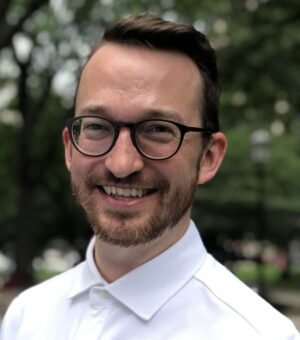
When returning to their communities from criminal justice settings, people with behavioral health needs face barriers in accessing…
Read MoreNew Hampshire Department of Corrections Commissioner Helen Hanks presents at the Medicaid and Corrections Policy Academy in-person meeting.
Read More Assigned to the Cloud Crew: The National Incarceration Association’s Hybrid Case Management for People with Behavioral Health Needs
Assigned to the Cloud Crew: The National Incarceration Association’s Hybrid Case Management for People with Behavioral Health Needs
When returning to their communities from criminal justice settings, people with behavioral…
Read More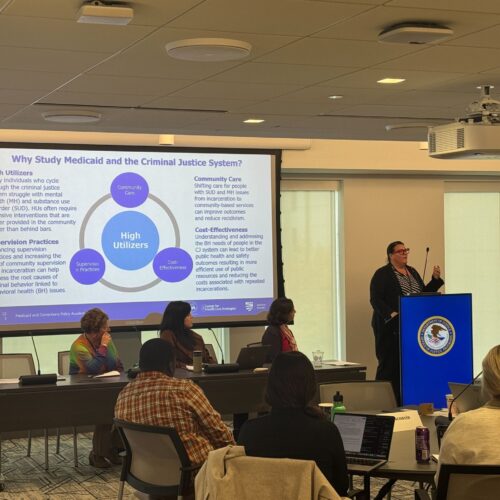 Meet the Medicaid and Corrections Policy Academy Mentor States
Meet the Medicaid and Corrections Policy Academy Mentor States
New Hampshire Department of Corrections Commissioner Helen Hanks presents at the Medicaid…
Read More Six States Commit to Improving Statewide Strategies to Address Youth Crime, Violence and Behavioral Health
Six States Commit to Improving Statewide Strategies to Address Youth Crime, Violence and Behavioral Health
The Council of State Governments (CSG) Justice Center has launched the Collaborating…
Read More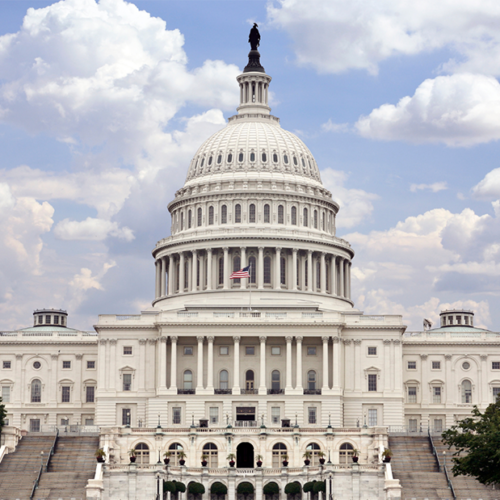 Bipartisan Group of 88 Lawmakers Push for Continued Funding for Reentry and Recidivism Programs
Bipartisan Group of 88 Lawmakers Push for Continued Funding for Reentry and Recidivism Programs
A bipartisan group of 88 lawmakers, led by Representatives Carol Miller (R-WV)…
Read More










